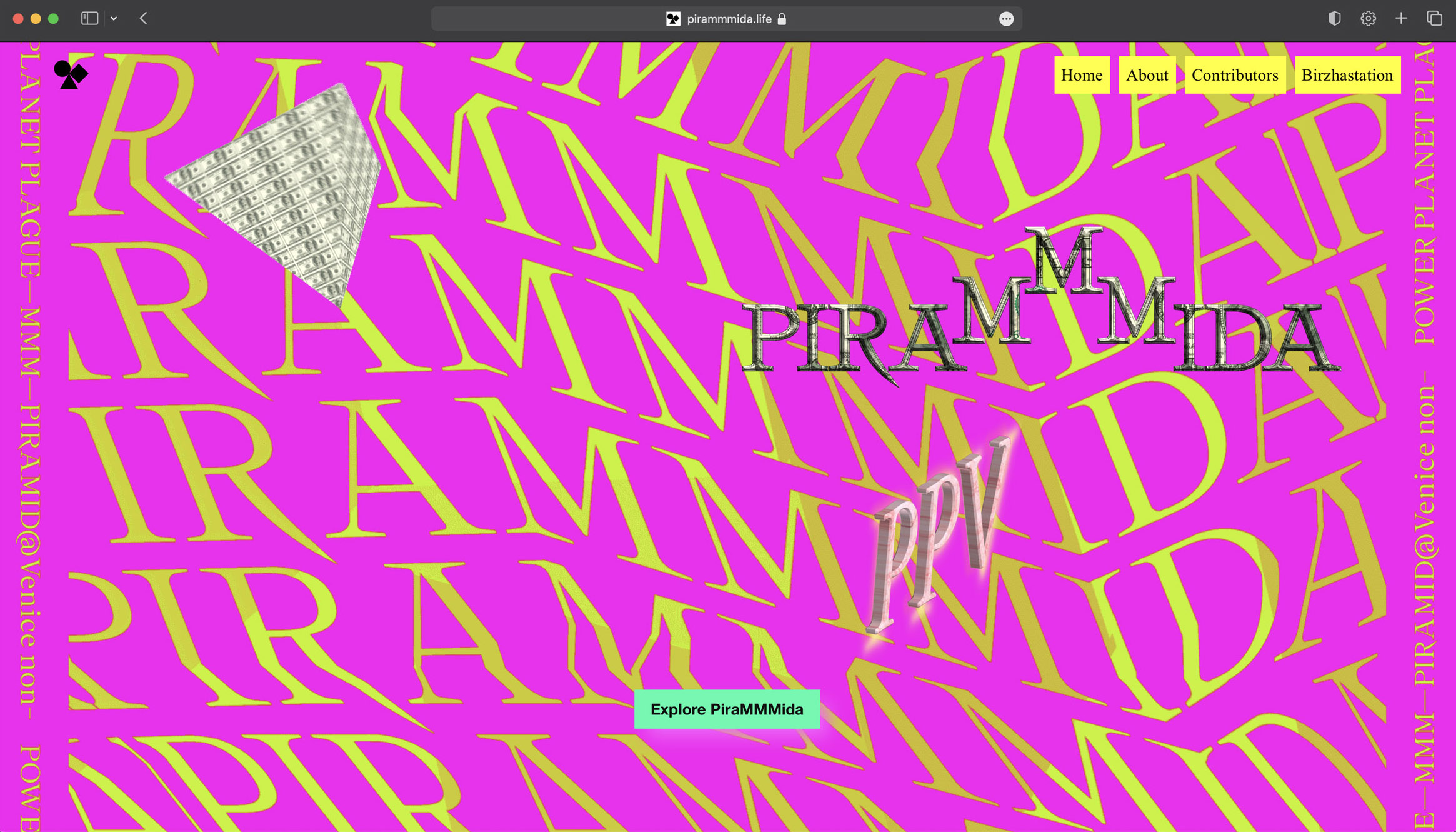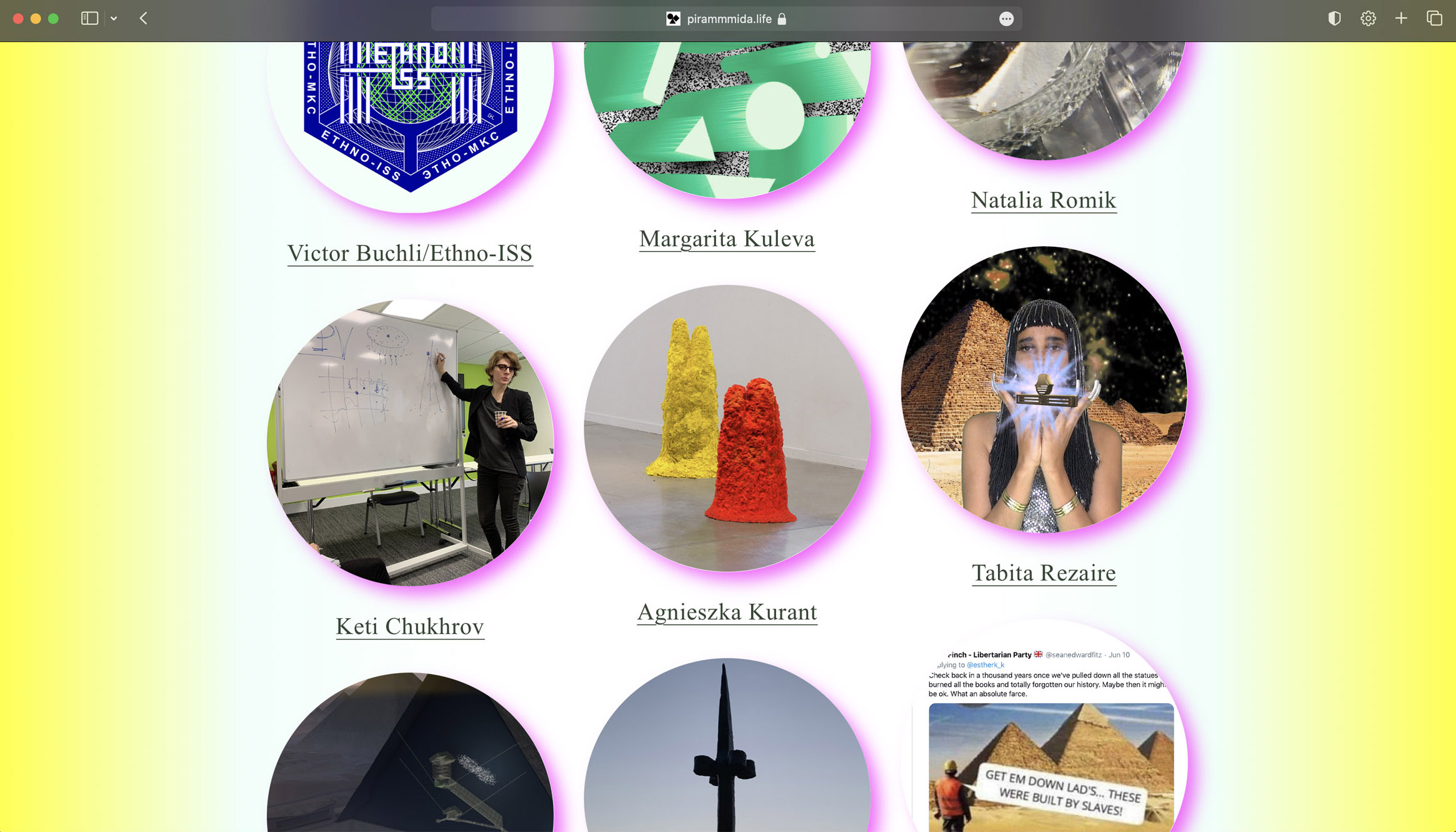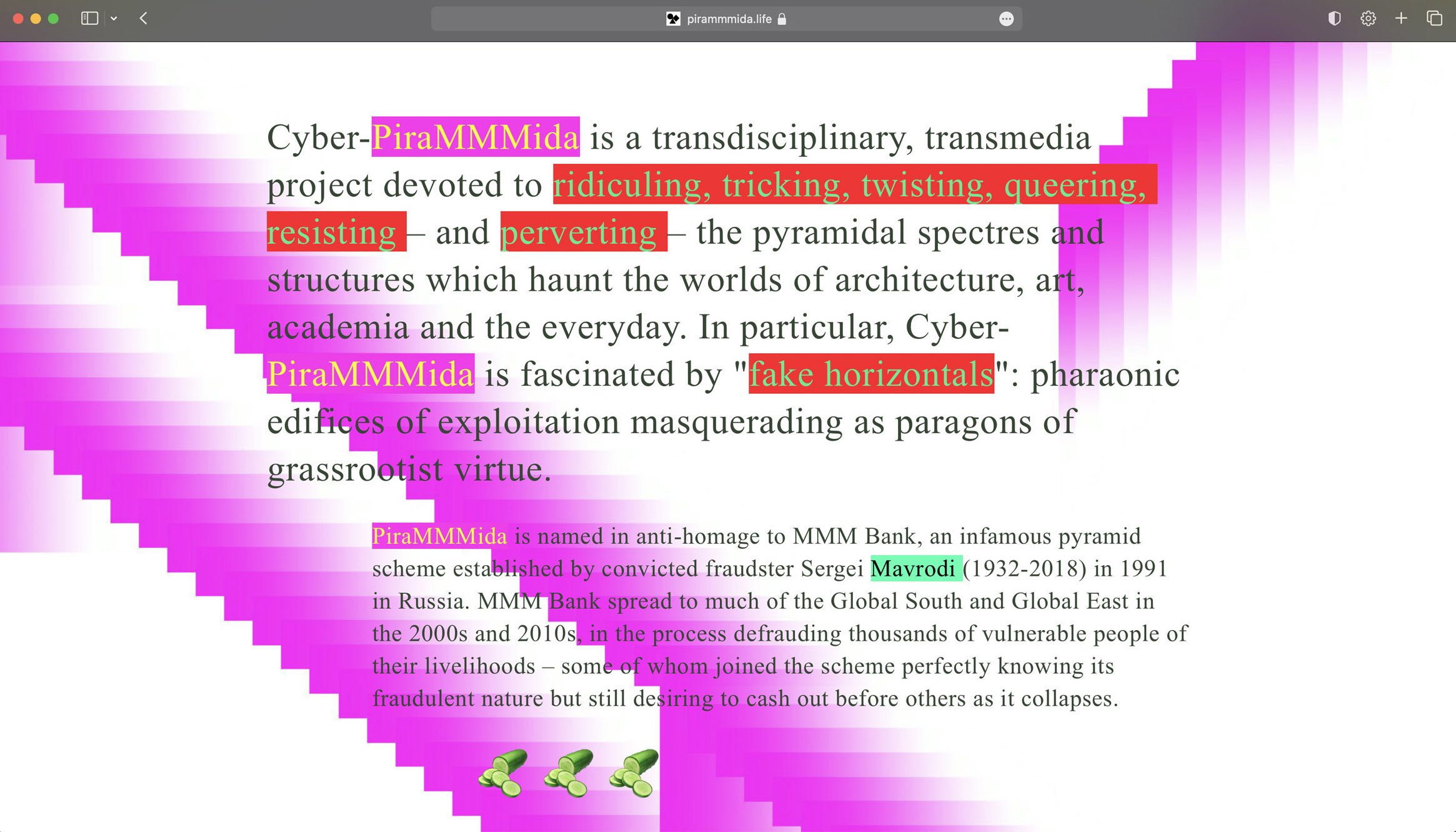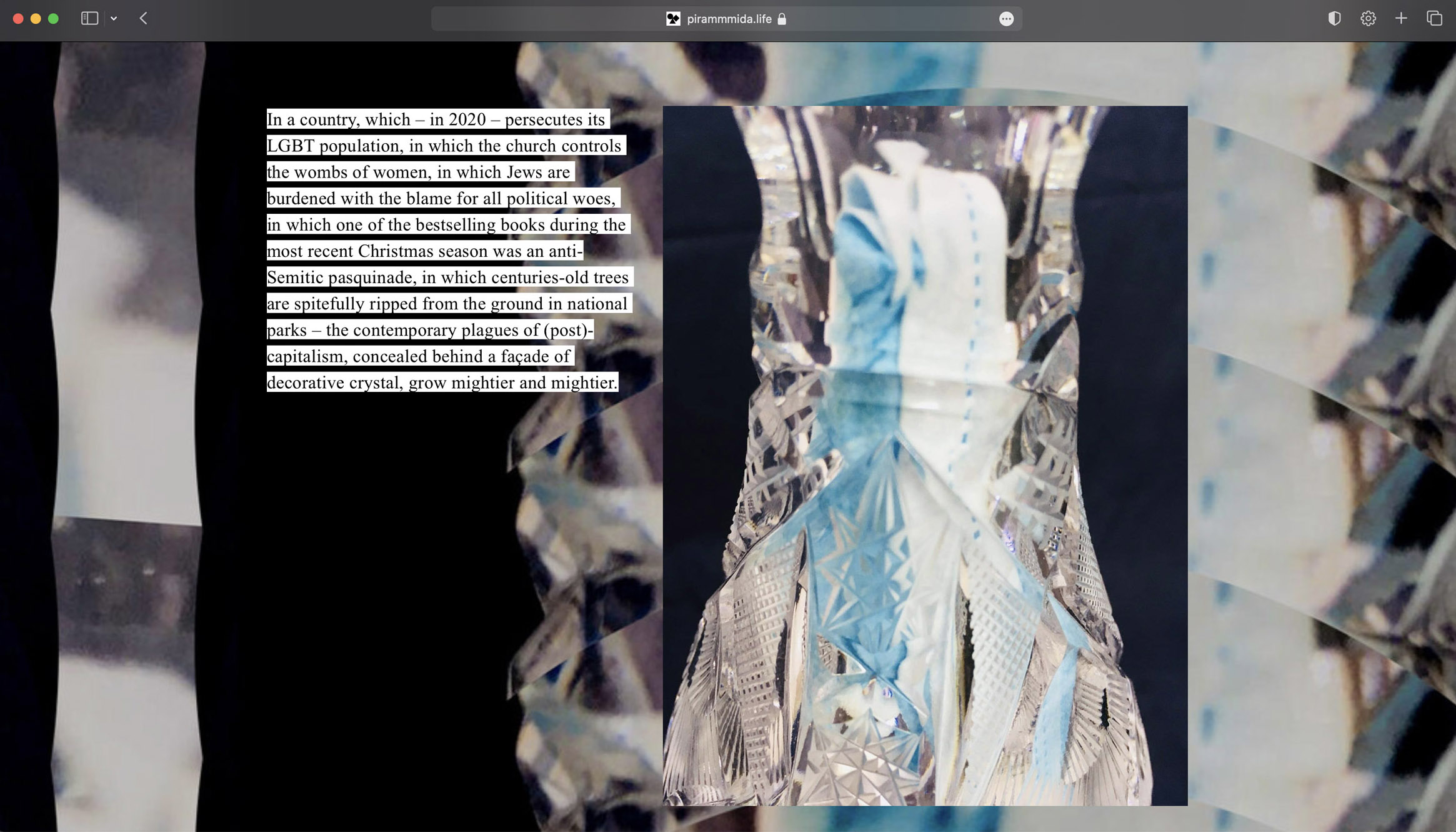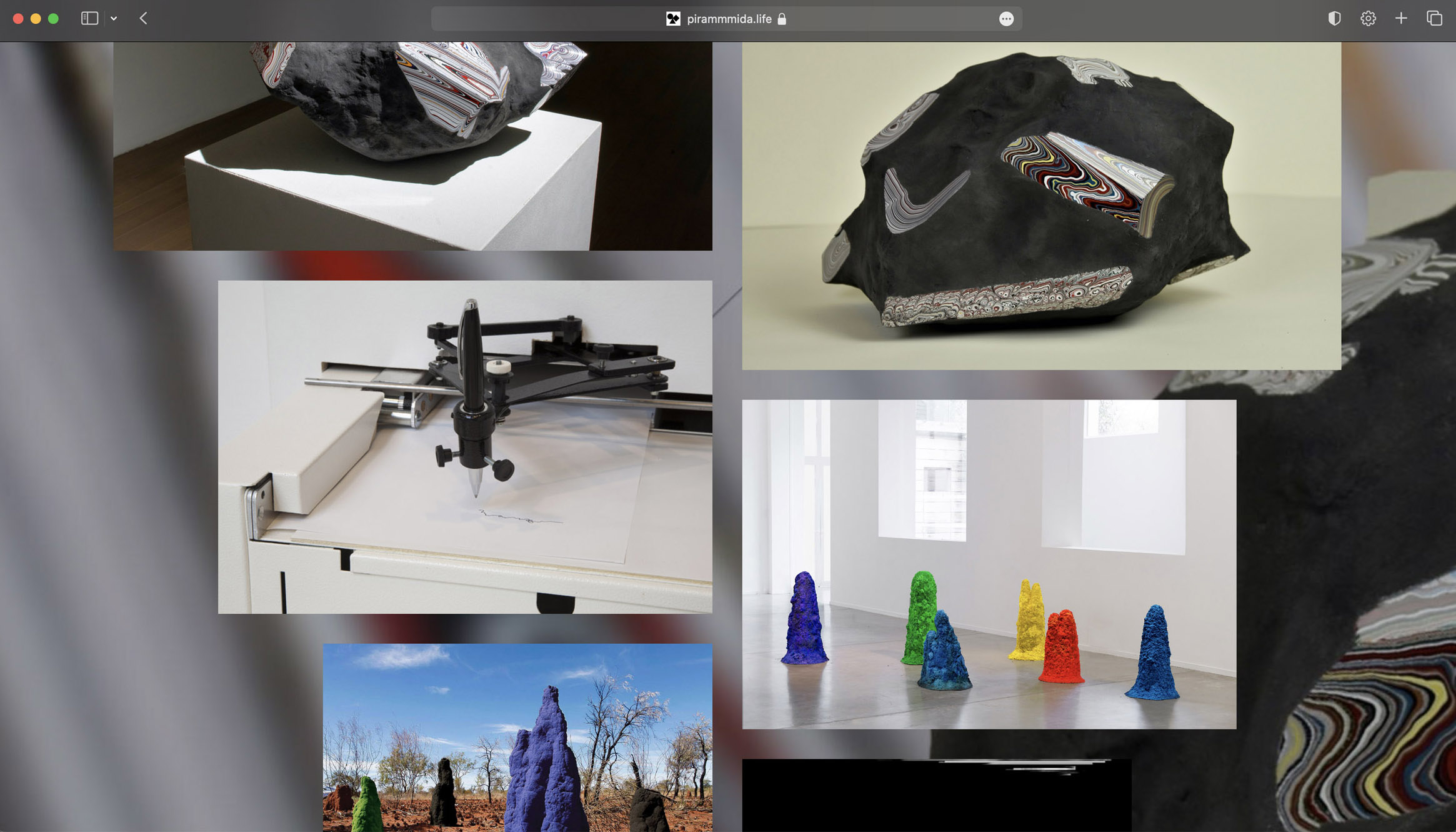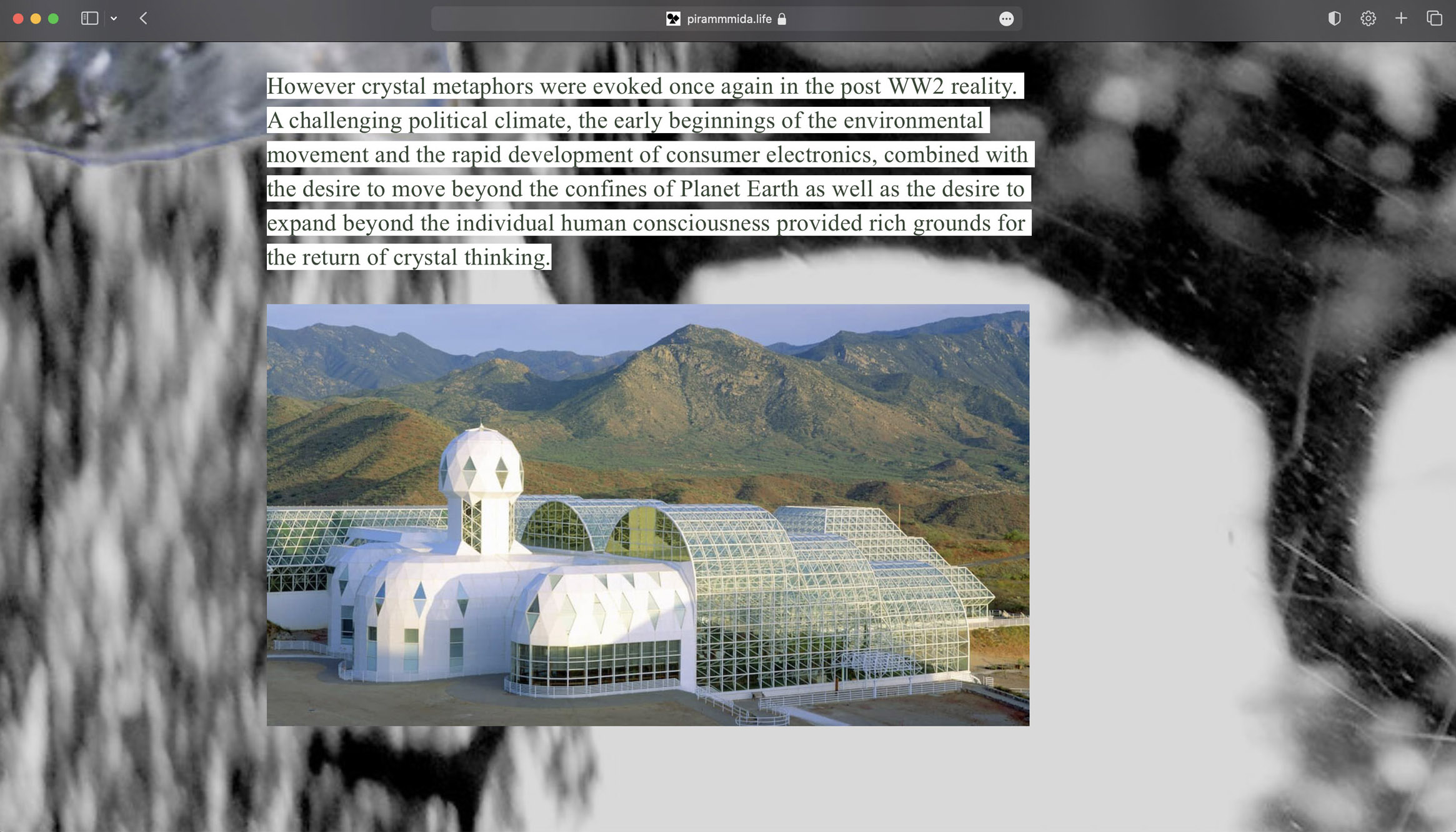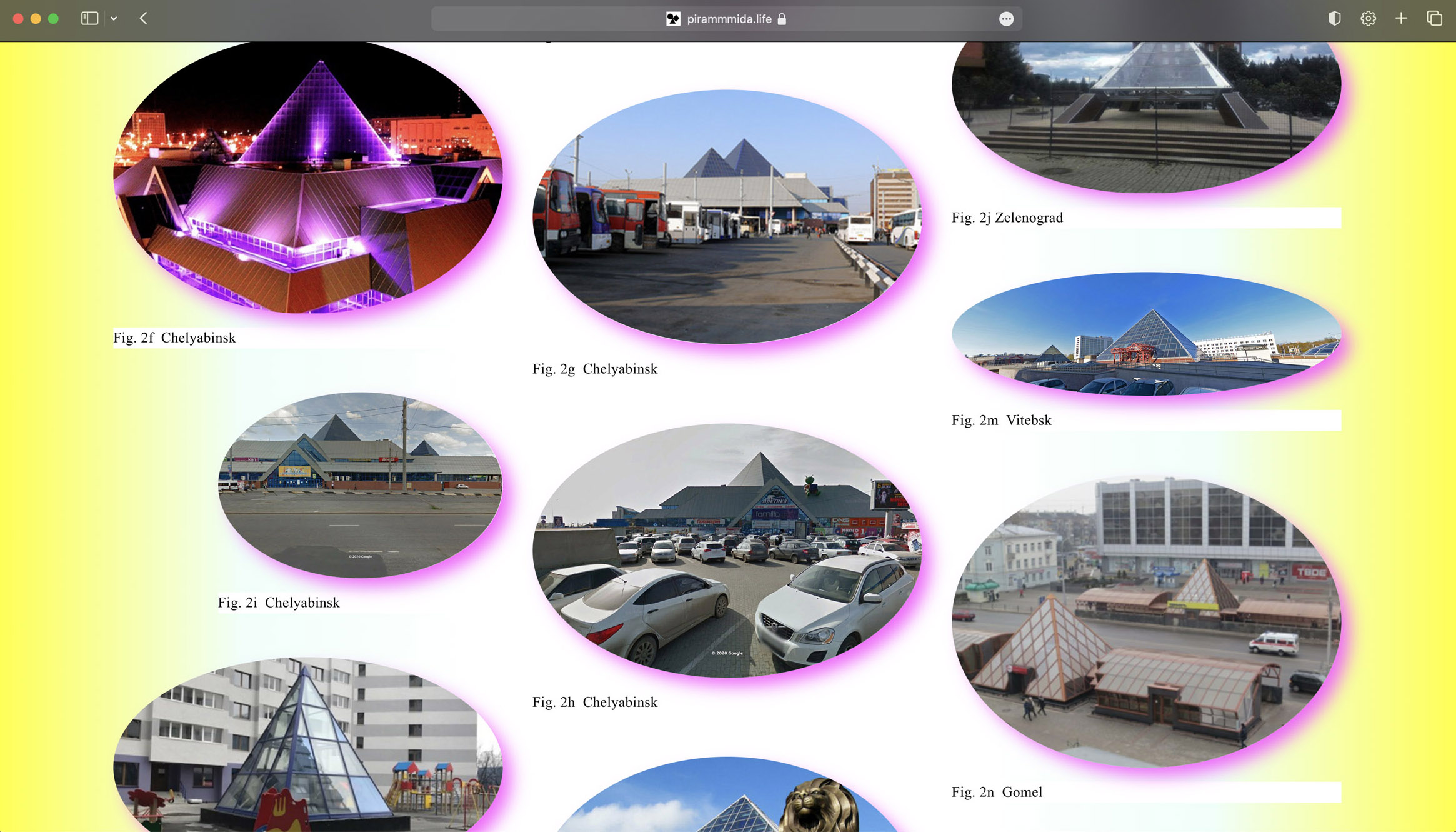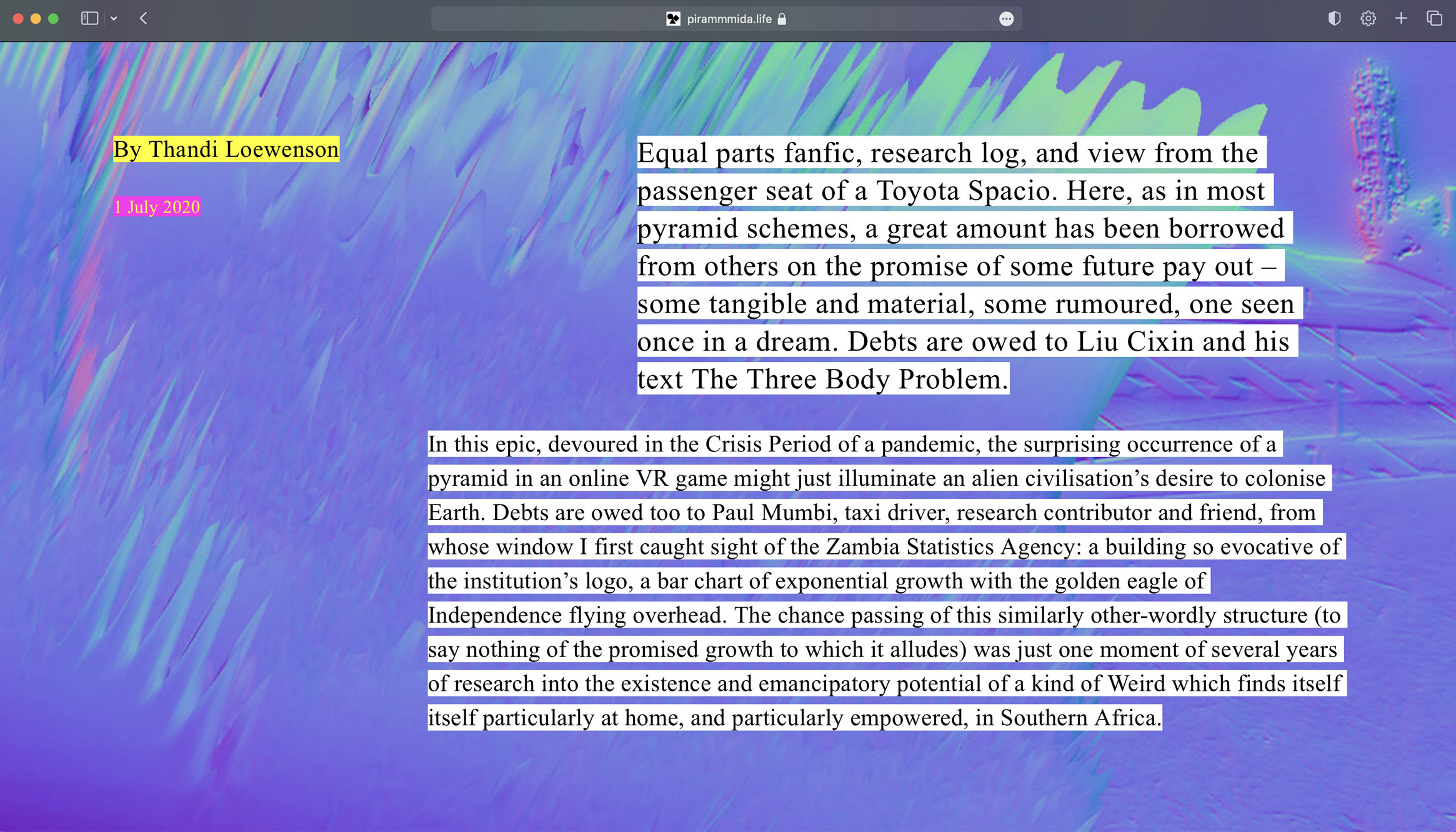PiraMMMida
PiraMMMida is a transdisciplinary, transmedia project devoted to ridiculing, tricking, twisting, queering, resisting – and perverting – the pyramidal spectres and structures which haunt the worlds of architecture, art, academia and the everyday. In particular, PiraMMMida is fascinated by "fake horizontals": pharaonic edifices of exploitation masquerading as paragons of grassrootist virtue.
PiraMMMida is named in anti-homage to MMM Bank, an infamous pyramid scheme established by convicted fraudster Sergei Mavrodi (1932-2018) in 1991 in Russia. MMM Bank spread to much of the Global South and Global East in the 2000s and 2010s, in the process defrauding thousands of vulnerable people of their livelihoods – some of whom joined the scheme perfectly knowing its fraudulent nature but still desiring to cash out before others as it collapses
The pyramidality of socio-political structures is embedded in our collective human imaginaries, materialities and passions: it has survived a multiplicity of plagues, wars, natural disasters and other calamities over the centuries. The current COVID-19 outbreak is no exception. The plague is not a leveller.
Cyber-PiraMMMida – an online portal and a consequent virtual symposium – is constructed around three conceptual cornerstones: Power, Planet and Plague. Contributors – artists, architects, thinkers, activists, scholars and others – each try to make sense of (and to pervert) the verticalities, horizontalities, perpendicularities and other political geometries (real and fake), which constitute the contours of our present-day pyramids in a time of pandemic, planetary meltdown and fascism resurgent.
Pyramidal structures continue to define the spatiality of both physical and metaphysical institutions: from cities obsessed with soaring verticalities and efficiency distributions to the new cults and religions of seemingly “secularised” societies. In our financialized age, quick-buck Ponzi and pyramid schemes have replaced longer-term flat-yield types of investment; the culture of debt and borrowed futures has completely colonized the socio-political imaginary.
While our theoreticians are busy “keeping the social flat”, fantasising of plateaus rather than highlands and indeterminate rhizomes rather than protruding roots and branches, novel forms of hierarchy and inequality continue to sprout (and antique ones to flourish), camouflaged by the ersatz horizontality of sharing economies, crypto-currencies and networked sociality.
Meanwhile, the political economy and political geometry of the vertical and horizontal axes have been reversed. The poor once dwelled in the mountains, in garrets and in tower blocks. Today, the mountains are home to economic fora, garrets have been turned into lofts and tower blocks are demolished or left to burn to the ground. Only the celestial class of HNWIs (high net worth individuals) are permitted access to the clean(er) air high above the ground. Nature’s eternal ice towers melt into the sea, while the surging waves wash away all that is left clinging to the ground. As the seas recede, the acronymized gods who dwell in pyramids return in giant vessels (Grande Navi) to photograph themselves against the picturesque backdrop of those ruins still afloat.
Are any potent alternative political geometries possible in the context of the new-old pyramidal hierarchies of today, amidst a commodity fetishism more blinding than ever before? Can we find ways of queering, transversing, subversing and perverting the pyramids (and pharaohs) who loom among among us? Can we find ways of scaling the pyramid in order to chop off its tip? Or sliding down it, or digging through it, in order to undermine its foundations? Or finding a shortcut or a slowcut through its labyrinths, a secret portal, through which we can arrive somewhere other than the constant reproductions of an accelerated present in which we are always already late? And, most importantly, can we find a way of toppling the pyramid in such a way that it is not the wretched beings at its base who bear the brunt of the explosion, the burden of the collapse, the pounding of the waves?
PiraMMMida was originally planned as an installation, a deconstructed pyramid of translucent curtains and inverted clouds of dollar bills and chocolate coins to be built by artists, architects, academics and activists in the S.a.L.E. Docks on the Dorsoduro waterfront in Venice. The installation was a heterotopic riff on the official 17th Venice Architecture Biennale of Architecture’s theme of ‘How will we live together?’ In seeking to build a pyramid that could be traversed, transformed or collapsed without crushing those at its base, it proposed that a new non-fake form of equalitarian sociality could be created.
Rather than postpone the installation in the outbreak of COVID-19, it transposed into Cyber-PiraMMMida, an online platform constructed around three conceptual cornerstones: Power, Planet and Plague. In this virtual space, contributors try to make sense of, subvert and speculate upon the verticalities, horizontalities, perpendicularities and other political geometries (real and fake), which constitute the contours of our present-day pyramids in a time of pandemic, planetary meltdown and fascism resurgent. The projects, ideas and artworks presented collectively enquire: can speculation be repurposed in the direction of self-cancellation, critique and reaffirmation of the possible, desirable change of political and economic conditions of precarity and cancelled futures?
To speculate, Vyjayanthi Venuturupalli Rao observes, is to ‘situate ourselves at an edge, a limit, an impasse. It is also to reach out from that edge, to peer over and to partake by peering over; speculation’s classical Latin roots, specere and speculari, suggest that looking, observing, and anticipating are the active components of the act of speculating.’ At this edge, peering over the array of contributions to Cyber-PiraMMMida, we see the undulations and protrusions of wild capitalism – verticality, monumentality, uprightness; agentless networks and unstoppable flows; economic icebergs constituted by the care labour of women; a series of speculative bubbles; and potential tipping points in earth systems. Space, Doreen Massey reminds, is the sphere of multiplicity, in which distinct trajectories coexist in contemporaneous plurality. From here, we also see the transference and transversality of holding environments; female earth, queer children of Zeus and the intergenerational juncture; the hieroglyph for hotep which represents an altar or offering table; Judenhuts, yarmulkes, satellites, and UFOs.
From the immensity of the interplanetary, we can also see the intimately precious. Natalia Romik’s X Plaguesproject takes the form of a monolith of pyramidal glass fetishistically rotating as if on sale at auction, housing a series of dream-like representations of ten contemporary plagues in the form of objects enclosed within a tower of crystal glassware, including: ‘1. Unequal distribution of goods – a coin; 2. Antisemitism/ xenophobia / racism – a bitter herb… 9. Religious fundamentalism – fragment of a destroyed Palestinian house in Jaffa; 10. Contempt for science – the cover of the book Return to Jedwabne’. In their work on speculative design Anthony Dunne an Fiona Raby call for an alternate form of design practice, focused not on problem solving, but on dissent. Calling for such speculative imaginings to be made tangible, Dunne and Raby also speak to the specific responsibility and agency that designers hold in the construction of worlds, to manifest these alternate forms in design practice.
Situating ourselves at the edge here, we experience an ‘overview effect’ (Frank White via astronaut Robert Behken) to witness space as always under construction, never finished, never closed, always in the process of being made, the ‘simultaneity of stories-so-far’. From this open-ended space of speculation, alternative temporalities and topologies can be anticipated and observed. Alberto Duman’s dystopian hyperlinked pitch to Netflix reimagines the Khufu Pyramid as a memorial for the Spectacular Cult of The Ethical Disease, a redemptive planetary culture’s attempt to memorialise its possible annihilation with COVID-19, The Ultimate Object, buried deep within the belly of the pyramid, The Ultimate Architectural Object, as the Ultimate Utilitarian Land Art Formation as Mass Ornament.
Speculative fiction, Aimee Bahng summarises, is ‘a genre of inventing other possibilities (alternate realities, upside-down hierarchies, and supernatural interventions).’ As well as imagining the future, these possibilities explore different accounts of history. Thandi Loewenson’s weird fanfic research log speculates on previous incarnations of a governmental building in Lusaka through Liu Cixin’s eyes. What was once a royal residence and solar instrument, stacked stone slabs surrounded by Magnetite pendulums, transmogrifies into the banded windows, air conditioning units and downpipes of a central statistics office concretising its logo – a bar chart of exponential growth. Speculation, Bahng proclaims, can also take on different shapes, a radical unfurling, rather than protectionist anticipation: ‘Instead of using predictive calculations that perpetually attempt to pull the future into the present, these alternative speculative fictions, films, and other media forms work to release speculation from capitalism’s persistent instrumentalisation of futurity’. Speculation therefore becomes a much-needed agent of change within the solidified, everlasting present.
Perhaps, in its virtual form, PiraMMMida.life embodies the radical openness of this speculative realm as a space of the possible. The project altogether suggests the potentiality of speculation to be perverted, queered, weirded to turn its creeping impact on reality. As Rao puts it, ‘what emerges from a speculative process is and remains virtual. This does not mean that what emerges lacks reality, but rather that it remains in a process of potential realisation.’ PiraMMMida.life, as speculative counter-speculation, turns agency upside down, defamiliarises the present and opens the portals into possible futures.
